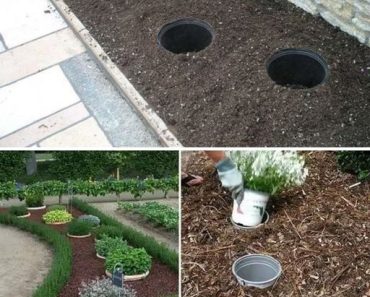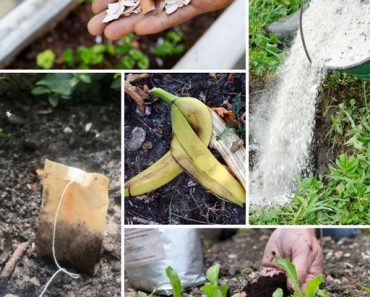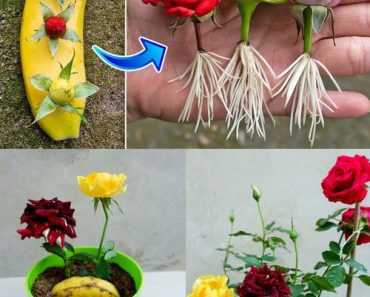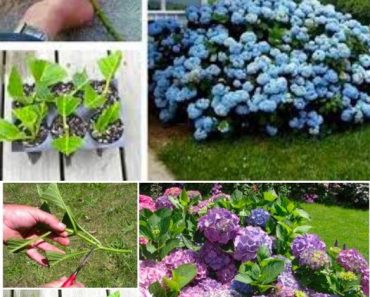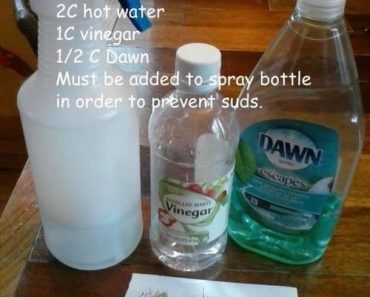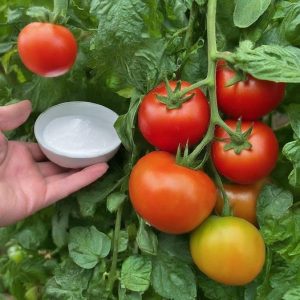
Embrace the Power of Baking Soda in Your Garden: 10 Clever Uses for Every Gardener
Gardening is a tranquil hobby that brings us closer to nature and its wonders. As we nurture our plants, we constantly seek natural and effective solutions to common gardening challenges. Baking soda, a staple in most kitchens, doubles as an invaluable ally in the garden. Let’s dive into the ten clever uses of baking soda that can transform your gardening experience.
Ingredients Overview:
- Baking Soda: A versatile and gentle compound, perfect for a myriad of garden applications.
- Water: Essential for creating solutions and diluting mixtures.
- Liquid Soap: Enhances the efficacy of baking soda as a fungicide.
- Flour: Works with baking soda to deter pests.
- Essential Oils (Optional): For enhanced pest control and fragrance.
Step-by-Step Instructions:
- Natural Fungicide:
- Ingredients: 1 tablespoon baking soda, 1 gallon water, a few drops of liquid soap.
- Instructions: Mix the baking soda and liquid soap into the water until fully dissolved. Pour the solution into a spray bottle and apply it to plants suffering from fungal diseases like powdery mildew. Spray thoroughly, ensuring both the tops and bottoms of leaves are covered.
- Weed Killer:
- Ingredients: Pure baking soda.
- Instructions: Directly sprinkle baking soda on the weeds, focusing on the base. Be cautious to avoid surrounding plants as high concentrations can harm them. Repeat as necessary.
- Pest Deterrent:
- Ingredients: 1 part baking soda, 1 part flour.
- Instructions: Combine baking soda and flour in equal parts. Dust the mixture onto plants infested with pests such as cabbage worms and aphids. Reapply after rain or watering.
- Soil Amendment:
- Ingredients: Baking soda, soil pH tester.
- Instructions: Test the soil’s pH first. If it’s overly acidic, lightly sprinkle baking soda over the soil and water it in. Retest the pH after a few days and adjust as needed.
- Tomato Sweetener:
- Ingredients: Baking soda.
- Instructions: Lightly sprinkle baking soda around the base of tomato plants. This reduces soil acidity, leading to sweeter tomatoes. Be mindful not to overapply to prevent soil imbalances.
- Compost Enhancer:
- Ingredients: Baking soda.
- Instructions: Add a small amount of baking soda to your compost bin to create a more alkaline environment. This speeds up the composting process. Avoid overuse to prevent halting decomposition.
- Odor Absorber:
- Ingredients: Baking soda.
- Instructions: Sprinkle baking soda in areas prone to odors, such as compost bins or around trash areas in the garden. This neutralizes unpleasant smells and keeps your garden fresh.
- Tool Cleaner:
- Ingredients: Baking soda, water.
- Instructions: Make a paste with baking soda and water. Use this paste to scrub gardening tools, removing dirt and rust effectively. Rinse and dry tools thoroughly after cleaning.
- Seed Germination:
- Ingredients: 1 tablespoon baking soda, 1 quart water.
- Instructions: Dissolve baking soda in water and soak seeds in this solution for 6-12 hours before planting. This can enhance germination rates by softening seed coats.
- Ant Repellent:
- Ingredients: Baking soda.
- Instructions: Create barriers with baking soda around plants or along ant trails. This deters ants without the use of harmful chemicals.
Frequently Asked Questions
Q1: How often should I apply the baking soda fungicide?
- A1: Apply the baking soda fungicide once a week or after heavy rain until the fungal issue is resolved.
Q2: Can baking soda harm my plants?
- A2: Yes, if used in excess. Always use recommended amounts and monitor your plants for any signs of distress.
Q3: Is baking soda effective against all pests?
- A3: Baking soda is particularly effective against soft-bodied pests like aphids and cabbage worms. For other pests, you might need additional treatments.
Q4: How do I know if my soil is too acidic?
- A4: Use a soil pH tester. A pH below 7 indicates acidity. For most plants, a pH of 6.0-7.0 is ideal.
Q5: Can I use baking soda in my vegetable garden?
- A5: Yes, baking soda is safe for vegetable gardens when used correctly. It can help with pest control, soil amendment, and improving plant health.
Valuable Tips for Seamless Gardening
- Regular Monitoring: Keep an eye on your plants and soil regularly to catch any issues early.
- Moderation is Key: Use baking soda in moderation to avoid disrupting soil balance.
- Combination Treatments: Sometimes, combining baking soda with other natural remedies (like neem oil) can enhance effectiveness.
- Safety First: Wear gloves when handling baking soda mixtures to protect your skin.
By incorporating these clever uses of baking soda into your gardening routine, you can enjoy a healthier, more vibrant garden. Happy gardening, and may your green spaces thrive with natural, eco-friendly care
